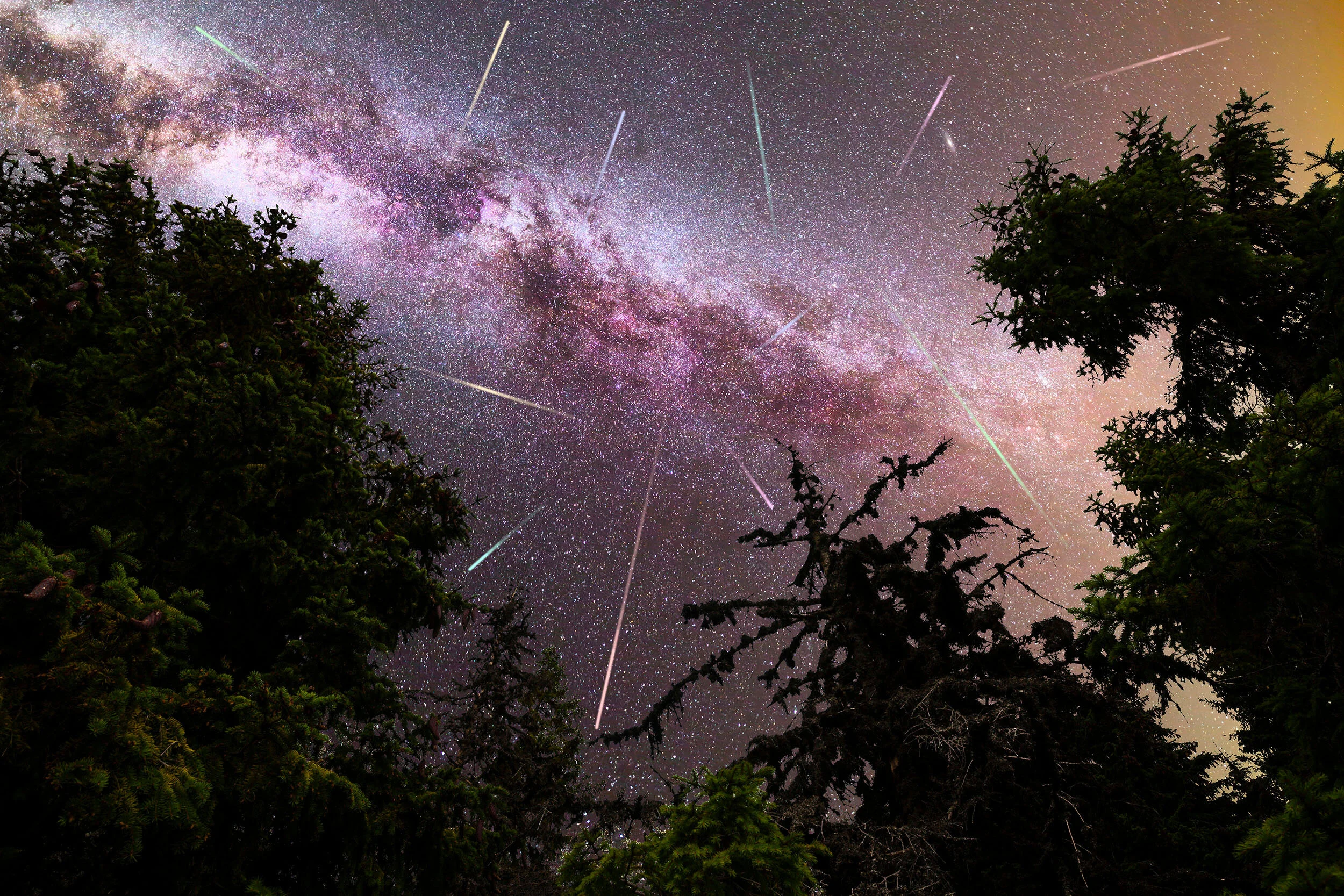
Perseids Meteor Shower
July 17th - August 24th, Peaks on Aug. 11th/12th
The Best Summertime Meteor Shower
Up to 100 meteors per hour!
The Perseids meteor shower is a popular summertime event produced by the remnants of Comet Swift-Tuttle. The radiant - or apparent direction from which the meteors originate - lies in constellation Perseus — near the North Star of Polaris, but meteors can be seen in any part of the sky.
The Perseids are one of the most active meteor showers of the year, producing 50 - 100 meteors per hour, and are known to produce fireballs that leave long, colorful streaks in their wake. This is because the meteors entering Earth’s atmosphere from Comet Swift-Tuttle are larger in size than those from most other meteor showers.
While the Perseids can be seen anytime after dark, the best time to see these fireballs are in the early morning hours up until dawn — preferably with little to no moonlight. In 2021, the Perseids will peak just after a new moon, meaning excellent viewing conditions!
While the Perseids can be seen anytime after dark, the best time to see these fireballs are in the early morning hours up until dawn
2025 Perseids Meteor Shower at the
Eastern Sierra Observatory
Huge Telescope… Hot Tub… SHIFTPOD Accommodations… Huge Grill & Griddle… Pool Table… Amazing Views Of The Eastern Sierra… And The Perseids Meteor Shower — All Yours, All Night!
Find your favorite place to watch the Perseids Meteor Shower
Meteor Fun Facts
A meteoroid is a chunk of rock traveling in space. A meteor is any meteoroid while it burns up entering Earth’s atmosphere. A meteorite is a meteor that has made it to Earth’s surface.
A meteor shower occurs when the Earth passes through the trail of meteoroid debris left by a comet or asteroid.
Most meteors are the size of pebbles and no larger than a baseball.
When a meteoroid hits Earth’s atmosphere they can be traveling as fast as 130,000 mph (209,215 kmh).
Millions of meteoroids travel through the Earth’s atmosphere every day but most are small and burn up quickly.
Most meteors fall in the ocean because the Earth's surface is covered by more water than land.
Meteoroids more than 10 meters in diameter are classified as asteroids.
An estimated 500ish meteorites reach the ground every year, but only five or six are recovered for scientists to study.
Meteors are sometimes observed with red, yellow, or green trails. These colors are caused by the ionization of molecules - like oxygen, which appears to be green.
The Perseid meteor shower was first observed about 2000 years ago and recorded in the Chinese Annals.
According to a study by Nature done in 1985, a meteorite will hit a human being once every 180 years. A woman named Ann Hodges is the only confirmed person to be hit by a meteorite back in 1954, so that means the next time someone will be hit by a meteorite is around 2134 – an average of .0055 per year.




